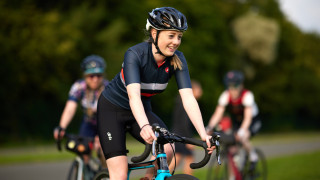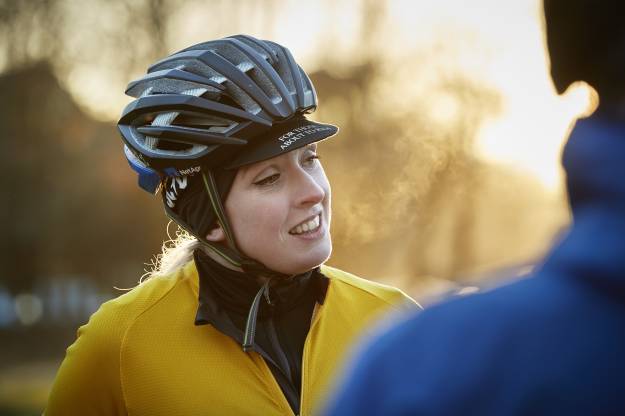With much of the country currently experiencing a period of hot weather, and with a Met Office extreme heat warning in place in some areas from Sunday, we’ve pulled together the following advice for riders, event organisers and parents to ensure that we can keep everybody cool, hydrated and safe during this period.
Guidance for event organisers
It’s been great to see so many event organisers and clubs already putting measures in place to mitigate the heat this weekend. While it’s important that participants prepare themselves for the weather by remembering to bring their own liquids, sun protection and clothing (and this should be reiterated in any pre-event communications), we’d encourage event organisers to:
- Provide additional shaded areas (ie. gazebos) if natural cover is limited.
- Provide access to a water supply if possible, and ensure that this is made available to volunteers and marshals and in other key areas.
- Ensure that you have a stock of ice packs which can be accessed by First Aiders and others in need.
- Stay tuned for Met Office updates here.
Guidance for parents
It’s important that parents properly equip their children to stay safe in the heat, and in some cases you may deem it safer to reduce their time participating.
The Melanoma Fund has produced a really handy Outdoor Kids Sun Safety Code which we’d encourage you to read here, however the key points are:
- Prepare: Ensure that everyone arrives ready for a day in the sun.
- Protect: Use clothing, hats/sunglasses and sunscreen, re-applied at breaks.
- Shade: Avoid direct sunlight during lunch or while watching others.
- Hydrate: Ensure water is always available.
- Lead by example: Inspire children with your own actions.
Guidance for riders
For those riding or racing this weekend, there are a number of key considerations you should keep in mind. The following guidance has been taken from the British Cycling Insight Zone.
Acclimatise
The most common reason for riders suffering from gastric distress and underperforming, especially when riding in heat, is that they’re not acclimatised to the heat. If you’ve not had a period of time to build up to riding in the heat, you should measure your effort accordingly and don’t expect to be able to ride at your usual level/distance.
Adapt your pacing strategy
Ride to the lower ends of your normal training zones and, on long rides, pace ultra-conservatively early on until you’ve got an idea how your body is reacting to the heat. Don’t just mindlessly stick to your regular training zones or one measure of them. Use a combination of power, heart rate and perceived exertion to judge how you’re doing.
Hydrate
There’s been a lot of misinformation about hydration and endurance activities but the bottom line is that, for long rides in hot conditions, dehydration is far more of a concern than over-hydration.
Exact fluid requirements vary considerably depending on the rider, climatic conditions and riding intensity. However, you’re probably looking at 500-1000ml per hour. A good guideline is to have a sip from your bottle every 5-10 minutes. Don’t forget you’ll also need to replace electrolytes along with the fluids. Find out more about hydrating on the bike here.
Take action against heat exhaustion
Heat exhaustion and the far more serious heat stroke are a risk if you’re riding in the heat and you should be aware of the signs and treatment for yourself and other riders. Find out more about the signs and how you can prevent them here.
Take a break
If you do start feeling overly fatigued, nauseous, as if you’re overheating or that your heart rate seems higher than the effort you’re making, stop and have a break. Find some shade, sip some fluid and take 15-30 minutes to allow yourself to cool down and reboot.
Don’t burn
Along with the serious long-term health implications, sunburn can impair thermoregulation and potentially reduce performance. On multi-day rides it can also impact on sleep quality and have an accumulative negative effect on performance. Find out more about protecting yourself from the sun here.
Get out early or late
For general riding and training, especially if you’ve got some higher end efforts planned, look to ride either early in the morning or late in the evening when temperatures will be lower. Avoid riding during the middle of the day when the sun is at its most intense.
Air quality
In urban areas hot weather can lead to a significant reduction in air quality and, in poor conditions, riding should be avoided. Most weather forecasts now also carry air quality and pollution level warnings.
Riders with asthma and other respiratory conditions need to be especially vigilant and should always carry their inhalers or other medicines. In rural areas, high pollen counts can be an issue for riders who suffer from hay fever and again, weather forecasts should be consulted and, if necessary, riding plans altered and appropriate medical steps taken.
Recovery
Along with following your normal post ride routine to optimise recovery, if you’ve been riding in the heat, bringing your body temperature back down to normal levels should also be a priority.
Get inside and into the cool as soon as possible, don’t be tempted to sit out in the sun, and consider blending some ice into your recovery drink. A cool shower or bath will also help and, once clean and dry, you should aim to relax inside or in the shade until you feel as though your body temperature has returned to normal.








